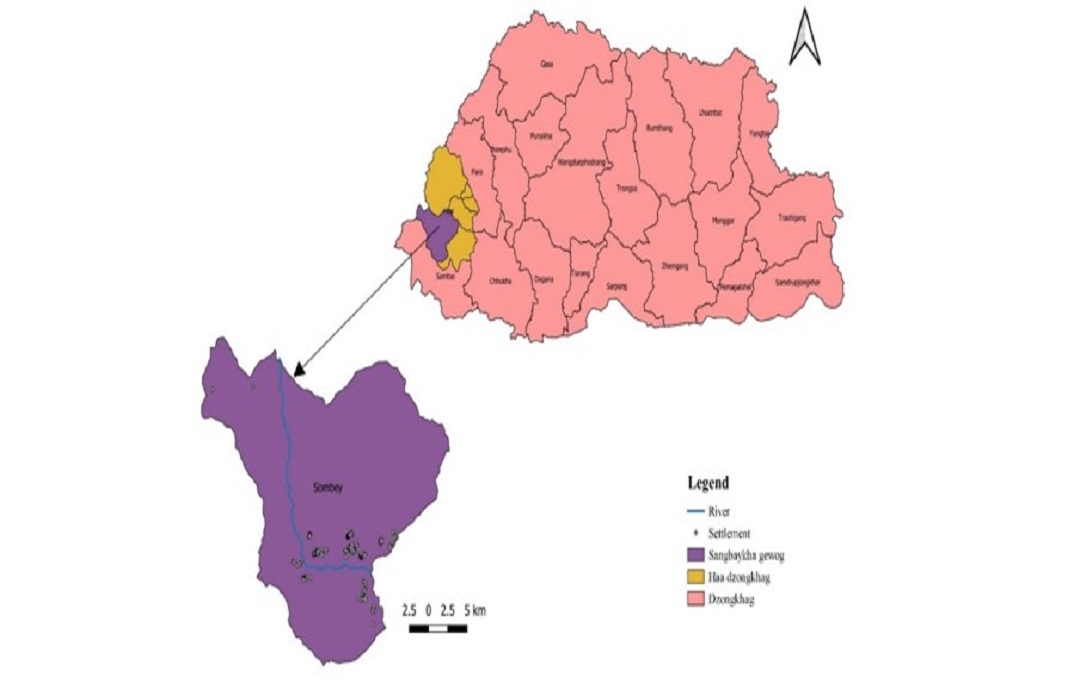Conservation Status of the Last Himalayan Cattle Breed of Bhutan
DOI:
https://doi.org/10.69650/ahstr.2024.1588Keywords:
Conservation, Nublang, Thrabum, Siri cattle, BhutanAbstract
Siri cattle (Bos indicus) are native to the mid-hills of the Himalayan region and are reared for milk, draught power, manure, and meat. In this study, we quantified Siri population trends in Bhutan over the last 11 years, evaluated factors threatening their survival, and analyzed conservation efforts. Also, necessary action plans to strengthen its sustainable management were identified. Data were collected from the participants through a stratified random sampling according to the role of each respondent: farmers (n=25), service providers or extension officials (n=172), and policymakers (n=29). Results showed that the Siri population is expected to decline over the next 10 years (2030) to 60,000 from the existing 86492. Several factors contribute to a population decline, including reduced economic returns, government incentives for stall-feeding with a small number of high-yielding cows, and a farm labor shortage. More than 80% of service providers and policymakers supported the idea of the conservation of native breeds owing to their usefulness as draught animals and in providing income to marginalized farmers. They also supported the idea of having a rigorous government policy to conserve the Siri cattle population. Some conservation measures, such as ex-situ and in-situ conservation of genetic materials, have been initiated; however, this seems inadequate to reverse the rapid decline of the Siri cattle population. This is exacerbated by the lack of coherent policies and strategies, which limits conservation efforts. Therefore, it is recommended to have a robust and specific policy for Siri cattle conservation and priority actions in Bhutan.
References
Bera, P., Saha, D., Ghosh, S., & Das, S. (2016). Phenotypic characterization of different color variants of endangered Siri cattle in West Bengal and Sikkim. Indian Journal Animal Health, 55(2), 149-156.
Department of Livestock. (2022, August 24). National Nublang Breeding Farm (NNBF). https://www.dol.gov.bt/national-nublang-breedingfarm/#:~:text=Office%20of%20National%20Nublang%20Breeding%20Farm&text=It%20is%20located%208km%20away,breeding%20bulls%20and%202%20bullocks
Dorji, T., Hanotte, O., Arbenz, M., Rege, J., & Roder, W. (2003). Genetic diversity of indigenous cattle populations in Bhutan: implications for conservation. Asian-australasian journal of animal sciences, 16(7), 946-951.
Dorji, T., Kaneda, M., Lin, B. Z., Takahashi, A., Oyama, K., Sasazaki, S., Yamamoto, Y., Kawamoto, Y., & Mannen, H. (2010). Mitochondrial DNA variation and genetic construction of indigenous cattle population in Bhutan. The Journal of Animal Genetics, 38(2), 77-81. https://doi.org/10.5924/abgri.38.77
Dorji, T., Tshering, L., & Rai, D. (2009). Conservation of the last Himalayan cattle breed of Bhutan. http://www.sapplpp.org/files-repository/information-hub/BHGP04-PotentialGPNote.pdf/at_download/file
Joshi, B. R., & Rasali, D. P. (1998). Unique livestock resources of Mountain Farmers and the compatibility of on-farm conservation efforts with livestock development approaches. In T. Partap & B. Sthapi (Eds.), Managing Agrobiodiversity; Farmers' Changing Perspectives and Institutional Responses in the Hindu Kush-Himalayan Region (pp. 265 - 291). International Centre for Integrated Mountain Development (ICIMOD).
Namgay, K., Millar, J., Black, R., & Samdup, T. (2013). Transhumant agro-pastoralism in Bhutan: Exploring contemporary practices and socio-cultural traditions. Pastoralism: Research, Policy and Practice, 3, 1-26.
National Dairy Research & Development Centre. (2022). Annual Centre Report. NDRDC, Yusipang, Department of Livestock, Ministry of Agriculture and Forest
National Statistics Bureau [NSB]. (2020). Livestock statistics 2020. National Statistics Bureau
Ovaska, U., Bläuer, A., Kroløkke, C., Kjetså, M., Kantanen, J., & Honkatukia, M. (2021). The conservation of native domestic animal breeds in Nordic countries: From genetic resources to cultural heritage and good governance. Animals, 11(9), 2730.
Pal, A., & Chakravarty, A. K. (2019). Genetics and Breeding for Disease Resistance of Livestock. Academic Press.
Royal Government of Bhutan. (2001). The livestock act of Bhutan 2001. Ministry of Agriculture and Forest.
Royal Government of Bhutan. (2017). Livestock rules and regulations of Bhutan 2017. Ministry of Agriculture and Forest.
Sharma, R., Pandey, A., Singh, Y., Mishra, B., Singh, P., & Singh, G. (2008). Estimation of genetic diversity in Siri cattle from India. Russian journal of genetics, 44(11), 1331-1337.
Tamang, N., & Perkins, J. (2005). Cattle management systems in humid subtropical areas of western Bhutan. Journal of Bhutan Studies, 13, 105-118. https://www.bhutanstudies.org.bt/publicationFiles/JBS/JBS_Vol13/13-5.pdf
Tantia, M., Vij, P., Vijh, R., Kumar, P., Joshi, B., Nivsarkar, A., & Sahai, R. (1996). Siri: The cattle of eastern Himalayas. Animal Genetic Resources/Resources génétiques animales/Recursos genéticos animales, 19, 37-43.
Tenzin, J., Chankitisakul, V., & Boonkum, W. (2023). Current Status and Conservation Management of Farm Animal Genetic Resources in Bhutan. Veterinary Sciences, 10(4), 281.
Wangdi, J., Bhujel, P., & Wangchuk, S. (2014). Productive and reproductive performance of dairy cattle and their crossbreds in Bhutan. Livestock Research for Rural Development, 26(10) 181.

Downloads
Published
How to Cite
Issue
Section
License
Copyright (c) 2024 Asian Health, Science and Technology Reports

This work is licensed under a Creative Commons Attribution 4.0 International License.













